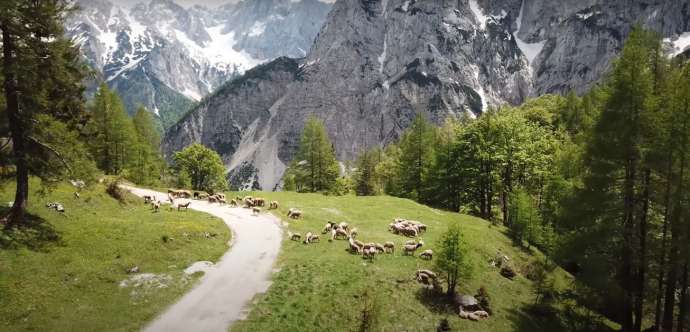STA, 18 May 2021 - The sole national park in Slovenia is celebrating 60 years since the Valley of Triglav Lakes was declared the Triglav National Park (TNP), and 40 years since a key law was passed to protect virtually the entire Julian Alps mountain range in the country.
Spreading on an area of almost 84,000 hectares, the park in the northwestern-most part of the country in the Julian Alps covers around 4% of Slovenia's territory.
It is named after the country's highest mountain, Triglav, a 2,864-metre peak which lies practically at the heart of it.
Enthusiasts recognised the area's beauty and the diversity of its fauna and flora, as well as the need to protect it, more than 100 years ago.
In 1908, before any national park was declared in Europe, scientist Albin Belar came up with the idea to protect the area under Komarča around the Savica Waterfall.
Protection was eventually introduced in 1924 when an 1,400-hectare area of the Valley of Triglav Lakes was declared an Alpine park.
The park ceased to exist after WWII as the relevant contract expired in 1944, but was revived and expanded to 2,000 hectares in 1961, changing its name to today's.
On 27 May 1981, a new law was passed to protect almost the entire Julian Alps, with another law in 2010 expanding the national park to its present boundaries.
Apart from Triglav, the national park boasts a number of natural wonders, such as gorges, waterfalls and lakes, including Lake Bohinj, and several peaks higher than 2,000 metres.
It is a popular tourist and hiking destination, with the first recorded ascent to Triglav in August 1778 credited to four locals upon initiative of Baron Žiga Zois.
But unlike national parks in Europe or the US, there are 34 settlements with some 2,700 residents in the TNP, who initially found the strict conservation regime limiting.
TNP director Janez Rakar says that all stakeholders have now realised protection is needed.
The locals' attitude towards the restrictions started changing when regulations on state co-funding of local projects started to be implemented.
"The state too has realised that the natural park is not just about occasionally bragging about it, but is really needed and shows the country's level of development."
He praised those who wrote the protective law to restrain the appetites for capital investments and restrict construction in the national park.
And although it is hard to precisely assess the effects of the protective law as social and climate change is happening, Rakar says "things would have been different without it".
"If there were no rules written down, the situation in this part of the natural environment would have been definitely different, and I dare say not better."







